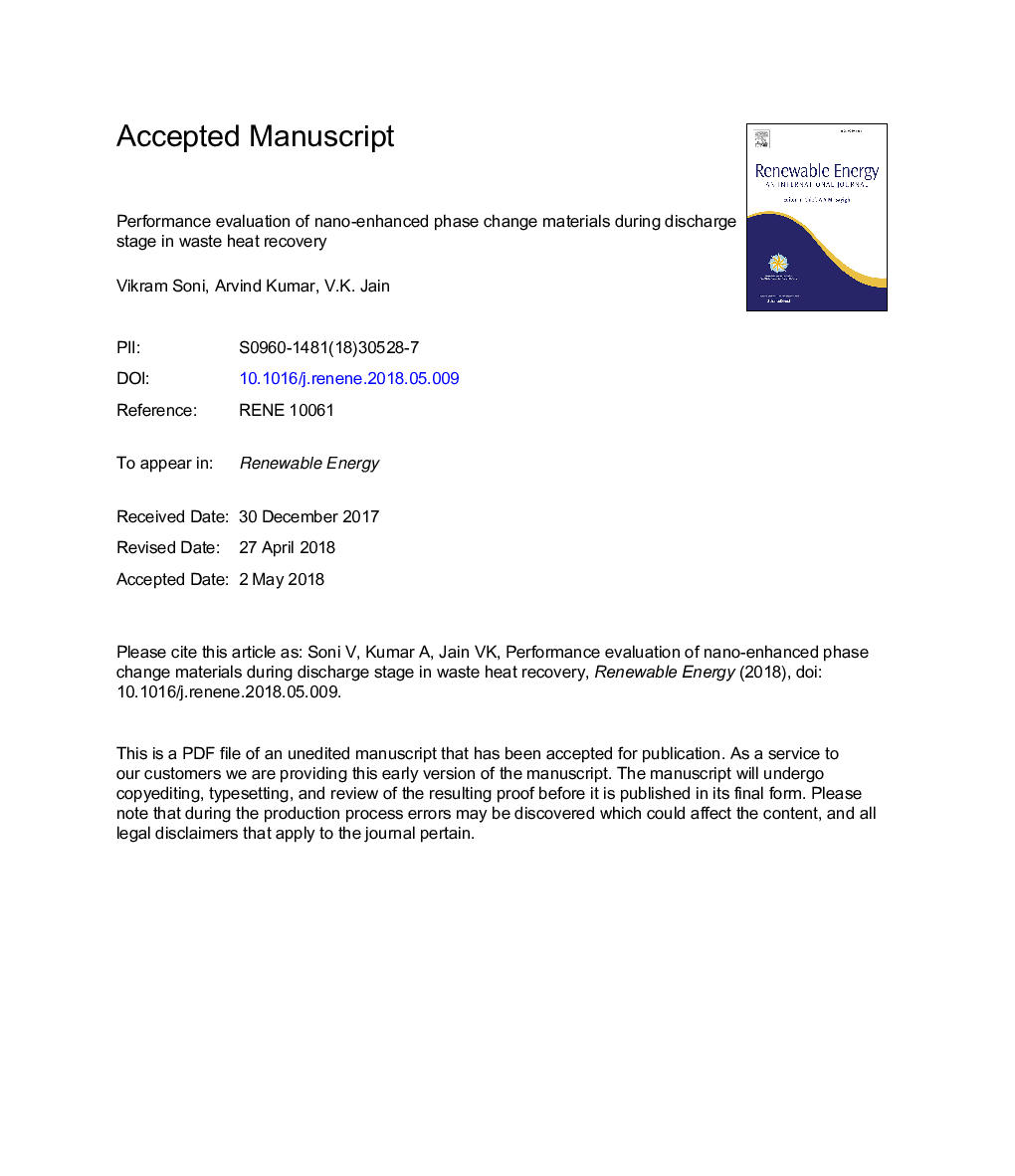| Article ID | Journal | Published Year | Pages | File Type |
|---|---|---|---|---|
| 6764134 | Renewable Energy | 2018 | 51 Pages |
Abstract
Waste heat recovery in temperature range of 100â¯Â°C-150â¯Â°C based on a novel phase change material (PCM) is numerically investigated. The study is performed using a numerical model accounting phase change, heat transport and convection during the discharge stage in a spherical capsule. High thermal conductivity nanoparticles are added to the base PCM to deal with the issue of low energy discharge. The homogeneous modelling approach is employed to predict the modified thermophysical properties of the Nano-enhanced phase change material (NEPCM) and to capture the effects of nanoparticles on the solidification process and the energy discharge. Cu/Erythritol, Al/Erythritol, TiO2/Erythritol and SiO2/Erythritol composites are investigated within the limit of 5% nanoparticle volume fraction. Considering discharging time as a critical parameter, 2.5% Cu/Erythritol composite is used and a detailed analysis is presented for thermophysical properties, thermal field, velocity field and solidified fraction field during the discharge process. The compromise between the decrease in storage capacity and the increase in discharge rate is described using a thermal performance analysis. Since the waste heat (industry exhaust and solar energy) is typically available in abundance, it is suggested that the loss of storage capacity is less significant than the obtained benefit of swift discharging operation.
Related Topics
Physical Sciences and Engineering
Energy
Renewable Energy, Sustainability and the Environment
Authors
Vikram Soni, Arvind Kumar, V.K. Jain,
